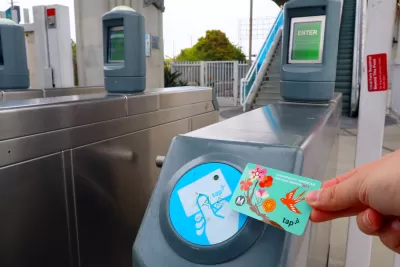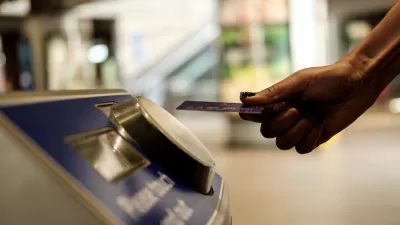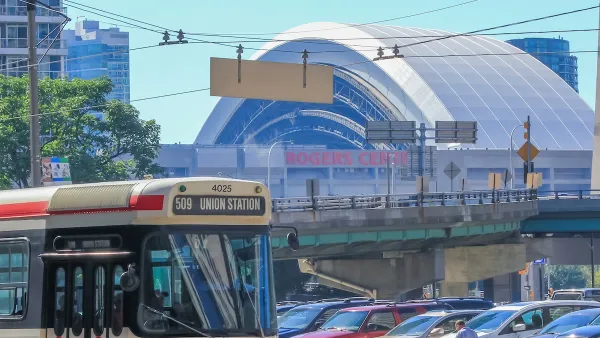Los Angeles transit riders who pay as they go will have their fare capped at $5 per day or $18 per week.

According to a press release in Business Wire, “The Los Angeles County Metropolitan Transportation Authority (Metro) has launched a new fare capping policy using Cubic Transportation Systems’ technology.”
The new payment system will cap payments made by TAP card at $5 a day or $18 over seven days. “Once the one-day and seven-day caps are reached, Metro riders will be able to use the system for free for the remainder of the day or seven-day period.” This allows riders to access the fare cap without having to pay the upfront cost of a daily or weekly pass.
The press release adds, “Fare capping arrives at an ideal time in Los Angeles, as the city prepares to host multiple mega events, including the 2026 FIFA World Cup and 2028 Summer Olympics – each anticipated to draw millions of global citizens. Not only will the ability to pay contactless make the visiting rider experience easier – but fare capping will make transit the most affordable and sustainable option for attendees. This will help reduce congestion across the region during these historic, heavily attended events.”
FULL STORY: L.A. Metro Launches New Fare Capping Policy on Cubic-powered TAP System

Maui's Vacation Rental Debate Turns Ugly
Verbal attacks, misinformation campaigns and fistfights plague a high-stakes debate to convert thousands of vacation rentals into long-term housing.

Planetizen Federal Action Tracker
A weekly monitor of how Trump’s orders and actions are impacting planners and planning in America.

In Urban Planning, AI Prompting Could be the New Design Thinking
Creativity has long been key to great urban design. What if we see AI as our new creative partner?

Cal Fire Chatbot Fails to Answer Basic Questions
An AI chatbot designed to provide information about wildfires can’t answer questions about evacuation orders, among other problems.

What Happens if Trump Kills Section 8?
The Trump admin aims to slash federal rental aid by nearly half and shift distribution to states. Experts warn this could spike homelessness and destabilize communities nationwide.

Sean Duffy Targets Rainbow Crosswalks in Road Safety Efforts
Despite evidence that colorful crosswalks actually improve intersection safety — and the lack of almost any crosswalks at all on the nation’s most dangerous arterial roads — U.S. Transportation Secretary Duffy is calling on states to remove them.
Urban Design for Planners 1: Software Tools
This six-course series explores essential urban design concepts using open source software and equips planners with the tools they need to participate fully in the urban design process.
Planning for Universal Design
Learn the tools for implementing Universal Design in planning regulations.
Appalachian Highlands Housing Partners
Gallatin County Department of Planning & Community Development
Heyer Gruel & Associates PA
Mpact (founded as Rail~Volution)
City of Camden Redevelopment Agency
City of Astoria
City of Portland
City of Laramie





























